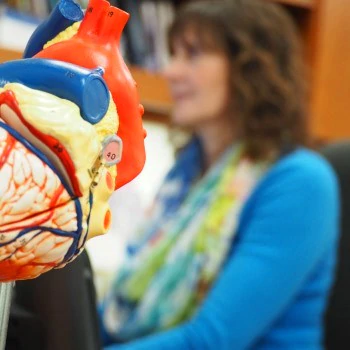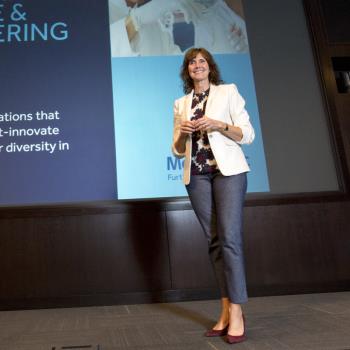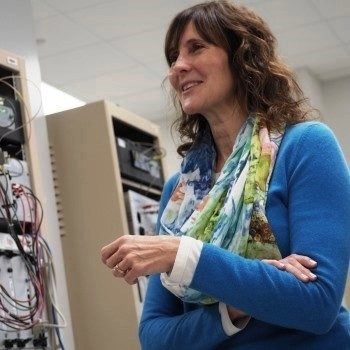‘The only girl in my engineering class’
From being the only female student in her college classes to becoming a company leader in recruiting the next crop of women engineers, R&D engineer Carol Malnati shares her passion for Women in Science and Engineering programs.
She couldn’t find the women’s restroom. It was nowhere to be found.
“It’s usually next to the men’s room,” recalls Carol Malnati. “But it wasn’t.”
She was 19-years old and a college student studying electrical engineering. And on this day, she found herself roaming the hallway in the engineering building looking for the bathroom.
“I was told it was in another building altogether,” she chuckles. “When they built the building, they didn’t think they would need a women’s restroom!”
It was the 1980’s and few women ventured into the university’s engineering buildings – let alone declare it as a major. In fact, Carol was typically the only girl in her engineering classes.
“That’s when it hit me,” she says. “I could either walk away and prove them right that I didn’t belong, or stick with it. At that point, I wanted to be someone that encouraged young women to get involved in math, science, and engineering.”
Today, she’s doing just that.
As a product development engineer in the Medtronic cardiovascular division, Carol has been doing what she loves for more than 25 years. She provided critical technical expertise for the company’s first implantable cardioverter defibrillator and continues to collaborate with engineering teams and physicians to find new ways of doing things.
But on top of her day job, she has taken on another commitment - overseeing the Women in Science and Engineering (WISE) Initiative at the company.
“I am passionate about encouraging women in the industry and giving girls in high school and college a vision of a career in engineering,” says Carol. “Medtronic has a wonderful mission that can attract talented women.”
Leaders at Medtronic, like Carol, see gender diversity as good for business. It’s why they are actively reaching out to young women through partnerships with universities and R&D leaders, ensuring retention among women engineers remains high, and providing female role models in areas where sometimes women are hard to find.
Beginning in the spring of 2017, Medtronic introduced another opportunity that taps into an often overlooked talent pool. Careers 2.0 is a “returnship” program designed to provide paid internships for female engineers looking to get back into STEM-related careers. Research suggests close to 25 percent of women in engineering careers leave the industry by age 30, citing work culture or family commitments.1
“This is a way to bring these talented women back into our technical and managerial ranks,” says Carol. “We are very excited about providing this amazing pool of talent an opportunity at Medtronic.”
Outreach to the next generation continues, too. This summer, Medtronic will again connect with young women through the Freshman Summer Internship program. It’s a chance to reach students entering, what Carol calls “the critical year,” before college. Currently, only 15 percent of female students declare engineering as a major when entering college, yet they perform equally well in math, science and technology classes in high school.1
From STEM programming to hands-on science projects for grade-school girls, there’s plenty on Carol’s plate. But she remains committed to seeing more women in engineering careers because she believes that “women provide a much-needed perspective that creates more innovative solutions.”
And she’s no longer feeling alone. She’s surrounded by other women who are making new innovations possible every day.
“Overall, I want to inspire women,” says Carol. “Whatever your passion is; clean air, fighting hunger, or improving healthcare. Behind the biggest challenges of humanity, there’s an engineer working to find a solution.”


